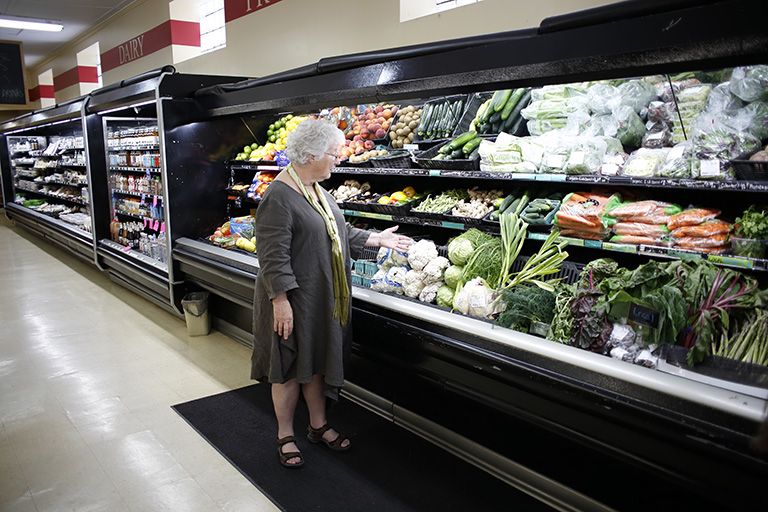Communities with robust local food systems are more resilient—better able to adapt to change—because they can maintain influence over their resources and reduce their dependence on factors out of their control. This resilience is even more critical in times of crisis, as we’ve seen during the COVID-19 pandemic.
In spring 2020, the IU Center for Rural Engagement and IU Sustainable Food Systems Science partnered with Lost River Market and Deli in Paoli, Indiana to launch a multifaceted community food project, Lost River Local. By co-designing this initiative, we incorporated the community’s food values and vision for a healthier local food system that addresses economic and social issues identified in the community.
Each week, Lost River distributes 50-70 boxes of fresh produce to participants who are either self-referred (Community Box) or prescribed (Nutrition Box) healthy local food. In both programs, participants connect with other community members working toward greater food literacy and a healthier lifestyle. They have access to online cooking and nutrition lessons using the Cooking Matters curriculum, and engage in a closed Facebook group where they share what they have learned and cooked each week. Each month, Lost River’s Harvest of the Month program features a local fruit or vegetable in their store and their Community and Nutrition Boxes, as well as in the Paoli school system cafeterias. This project is a great example of how to bring partners together for community-led food system change.
These are key lessons we learned while developing this project:
1 | Collaborate with strong leaders and partners who are in it for the right reasons and committed for the long term.
A robust local food system is dependent on a number of key transactional, institutional, and social partners. Transactional partners such as farmers, markets, food businesses, and consumers are all part of a local value chain and, to sustain their development, they rely on institutional partners or technical assistance agencies in business, education, economics, agriculture, and culinary arts. Social partners work to address community needs such as food insecurity, healthy food access, food literacy, food in healthcare, and community food production.
No one partner should have control of the agenda, but establishing a core partner can help move a project along. In designing food system initiatives, it is critical for all partners to reflect on their own roles in the local food system and their relationship to the roles of other partners, as well as their capacity to support change, share resources, and bring other collaborators to the table.
In this collaboration with IU, Lost River relied on several community partners to implement the Lost River Local initiative, including Southern Indiana Community Health Care, Orange County Health Coalition, Orange County HomeGrown, Paoli School Food Service, Paoli Ag Program, and Purdue Extension Orange County.
2 | Build initiatives that fit the community.
The local history, culture, infrastructure, and leaders make up the beginning of a long list of community assets that must be factored into any plan. Conversations with individuals and organizations leading the charge reveal a vision, but broader conversations with other players throughout the community reveal subtleties in perspective and ensure the design process is not based on false assumptions.



